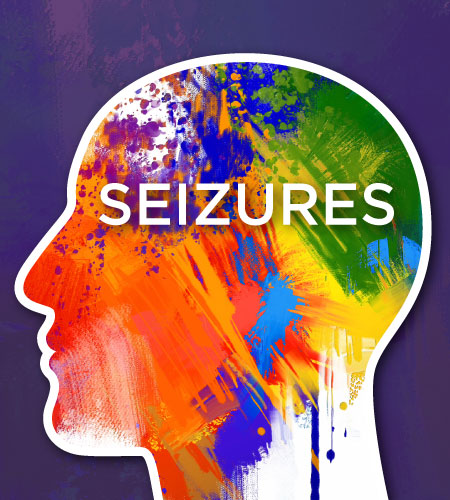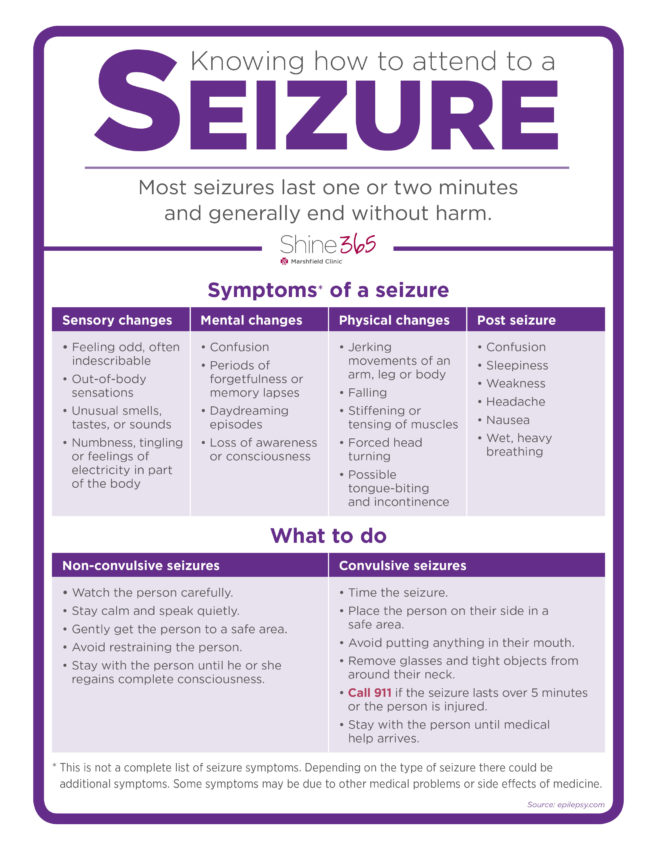
Symptoms and severity of a seizure depend on areas of the brain affected and size of the abnormal electrical impulse.
Most people think of someone falling to the ground and shaking uncontrollably when they hear the word “seizure.”
That type of seizure, called a generalized tonic-clonic seizure, is scary to witness but it is not the most common type of seizure, said Dr. Evan Sandok, a Marshfield Clinic neurologist.
Seizures can include a variety of symptoms and range in severity. Contrary to what you might think, seizures aren’t always emergencies, and you can help someone who is having a seizure.
An electrical short circuit
“An epileptic seizure is an abnormal repetitive electric signal, or short circuit, in the brain,” Sandok said.
Epileptic seizures are of two main types – generalized and partial seizures. Generalized seizures involve abnormal electrical activity in multiple parts of the brain. Partial seizures involve a limited area of the brain and are more common. Generalized and partial seizures are broken down into more categories based on symptoms.
Sometimes an irregular heart rhythm, low blood pressure, low blood sugar or psychiatric changes can cause non-epileptic seizures.
Symptoms range from barely noticeable to widespread
“The clinical signs of a seizure depend on where the electrical short circuit is and how big it is,” Sandok said.
Simple partial seizures may involve an unusual taste, smell, feeling or movement.
“People may have many simple partial seizures before they bring them to their doctor’s attention,” Sandok said. “Patients tell me they have odd spells they didn’t think were unusual until it started happening over and over.”
Short circuits in certain areas of the brain cause people to become unresponsive and lose awareness. Widespread abnormal electrical short circuits can cause people to lose consciousness, fall to the ground and shake.
Usually controlled with medication
“The goal of treatment is to have no seizures or side effects,” Sandok said. “For the vast majority of people, seizures are well-controlled with medication.”
Some people turn to ketogenic diet to prevent seizures if medication doesn’t provide adequate control. Ketogenic diet, which is high in protein and fat and very low in carbohydrates, changes the way the brain functions by changing its energy source. It’s effective for preventing seizures but can be hard to follow.
Rarely, more invasive treatments like special pacemakers and brain surgery are needed to control seizures.
Some patients and doctors choose not to treat simple partial seizures that cause minor symptoms and don’t disturb patients’ lives.
How to help during a seizure
Sometimes you may not realize someone is having a seizure and they don’t need help. Other times, a seizure looks like a major emergency.
Most seizures end without harm in a few minutes. You usually don’t need to call 911 unless the episode lasts longer than five minutes or the person is injured, but you can help by making sure the person is out of danger.
The chart below shows common signs of a seizure and how to help someone who is having a seizure. Stay with the person after the episode until they regain awareness or help arrives.



Thank goodness people have the internet know. I think I have had a history of seizures. I didn't get to go to the doctor when I was a teenager having them. I didn't know what they were until I recently read this now that I'm 52. I wonder if I am over them or will have one in future.
Great post. I'm facing many of these issues as well..